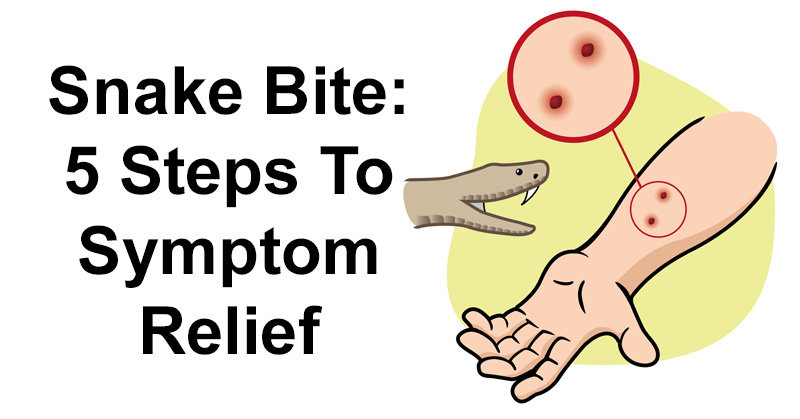According to the World Health Organization, snake bites are one of the top 20 neglected tropical diseases in the world. (1) Snakes kill more than 100,000 people each year around the world. In the United States, there are four types of venomous snakes. It’s important to know how to recognize snake bite symptoms and how to implement snake bite treatment in case of an emergency.
Venomous Snakes in America
- Rattlesnake: The largest venomous snake in the U.S., can be identified by a rattle and hiss. (2)
- Cottonmouth/Water Moccasin: Between 2-3 feet in length, named for their copper-red head. (3)
- Copperhead: Poisonous water snake with dark tan, brown or black skin with brown or black cross bands. (4)
- Coral Snake: Small and colorful, pencil-like body with yellow, red or black bands. (5)
Snake Bite Symptoms
- Rattlesnake: Severe pain, drooping eyelids, low blood pressure, excessive thirst, tiredness, vision, difficulty swallowing and speaking, muscle weakness, difficulty breathing and respiratory failure.
- Cottonmouth/Water Moccasin: Pain, change in skin color, shock, low blood pressure and weakness.
- Copperhead: Pain, change in skin color, shock, weakness and low blood pressure.
- Coral Snake: Difficulty speaking, muscle weakness, difficulty breathing, inability to move eyelids, convulsions, stomach pain, headache, shock, blurred vision, altered mental state, a twitching tongue, decreased oxygen saturation, paralysis and respiratory arrest. Symptoms may be delayed for 12-18 hours.
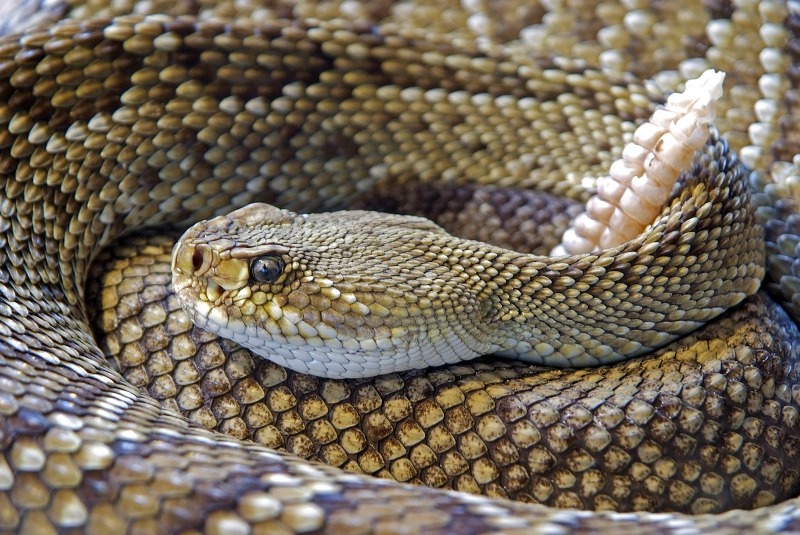
Precautions: Snake Bite First Aid
- Remove tight clothing and jewelry before swelling begins
- Stay calm and move away from the snake so it doesn’t strike again
- Keep the bite area at or below heart level
- Clean the wound, but do not flush it with water
- Do not use a tourniquet
- Do not apply ice or heat
- Apply a clean, dry bandage
- Do not take any pain medication or allergy medication
- Do not cut the wound or attempt to remove the venom
- Avoid caffeine and alcohol
- Stay as still as possible
- Carry the victim to go get help
- Do not try to capture the snake
- Take a picture of the snake if it is safe to do so, or make note of the color, markings and shape of the head
- Using a marker, draw a border around the redness, swelling and bruising every 15 minutes
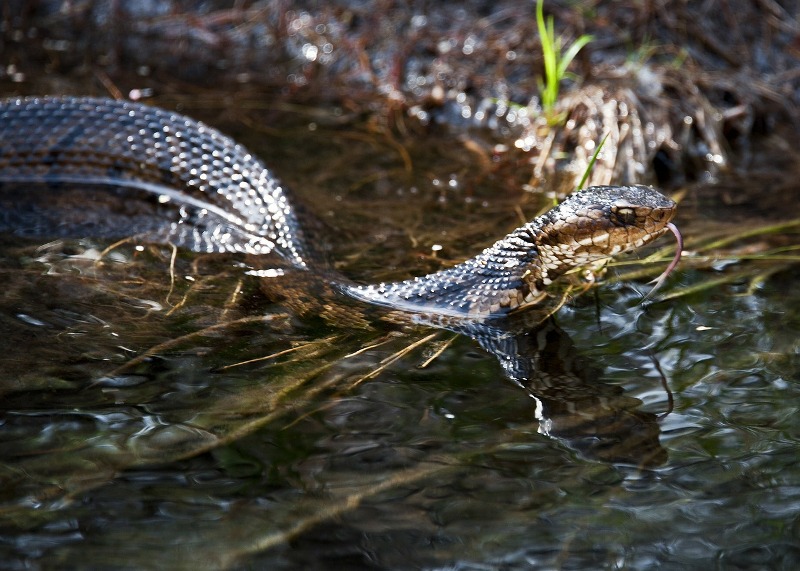
Snake Bite Treatment
1. Lavender Essential Oil
Stress and anxiety are common after a snake bite. Lavender essential oil can help keep your heart rate calm, stopping the venom from spreading too quickly. Place a few drops of lavender essential oil behind your ears or sniff it directly from the bottle.
2. Tea Tree Oil
Cleaning the area after you’ve been bitten is an important part of snake bite treatment. Use a natural antibacterial cleanser that contains tea tree oil to cleanse the area, then wrap it with a clean, dry bandage. Be careful not to wrap the area too tight. If a 911 worker instructs you not to cleanse the area, hold off until help arrives. (6)
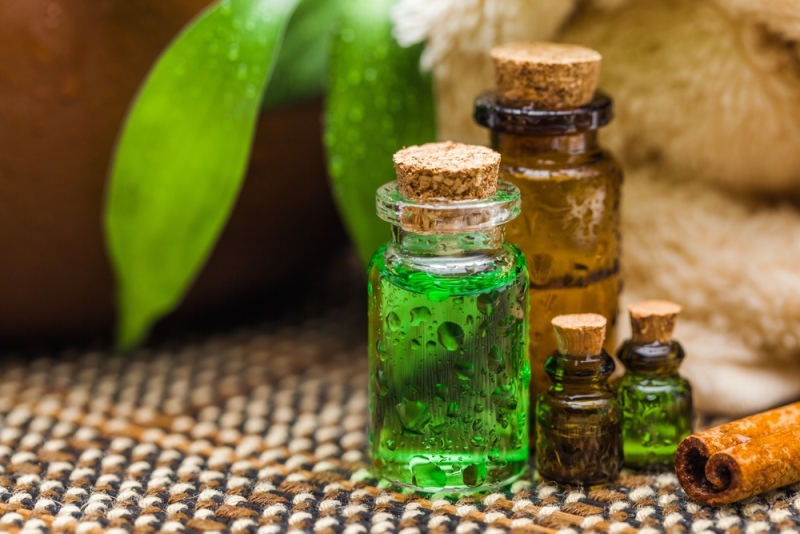
3. Echinacea
Echinacea can be used as a snake bite treatment to help reduce inflammation, relieve pain and give the immune system a boost. If you are taking any medications, talk to your doctor before using an echinacea supplement. (7)
4. Turmeric
Turmeric can be used as a snake bite treatment to help lower inflammation and reduce pain, thanks to its powerful anti-inflammatory properties. Check with your doctor before taking turmeric to make sure it’s safe in your particular situation.
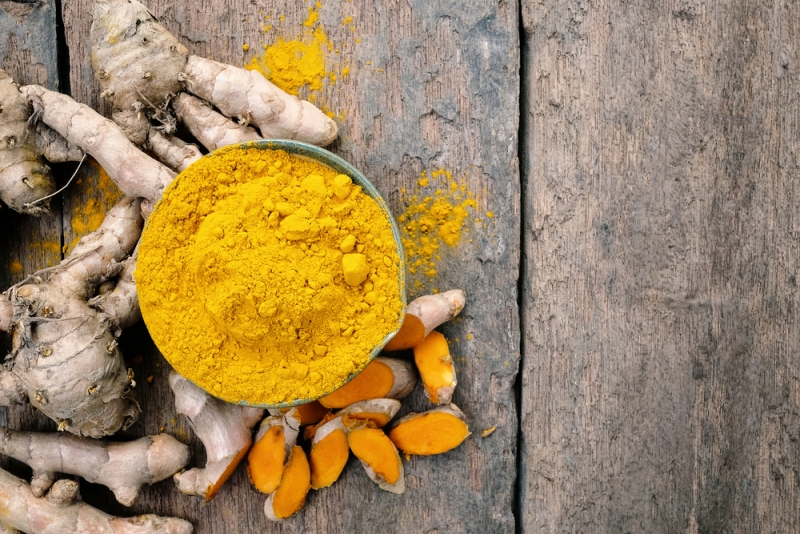
5. Coconut Oil
Coconut oil can be used to help heal wounds, including snake bites. Apply a small amount of oil to the wound and wrap the area with a bandage. Studies show that when coconut oil is applied topically, it has the ability to treat and heal wounds. (8)


